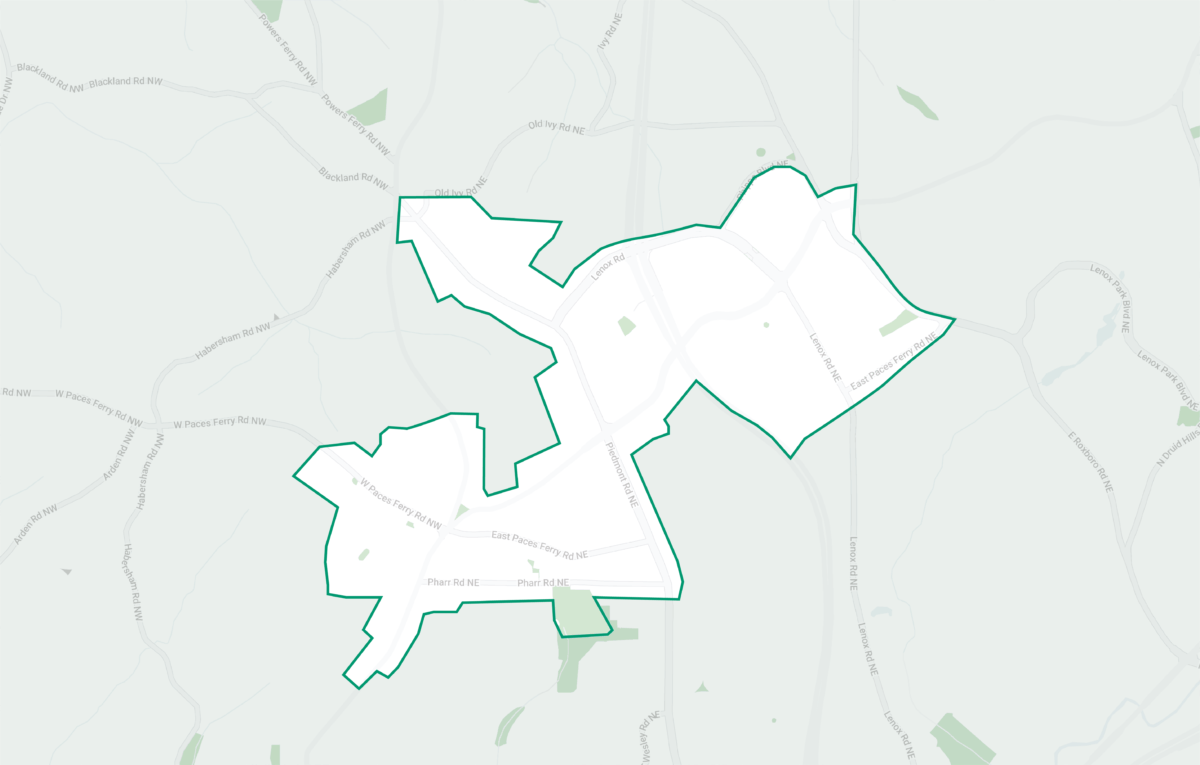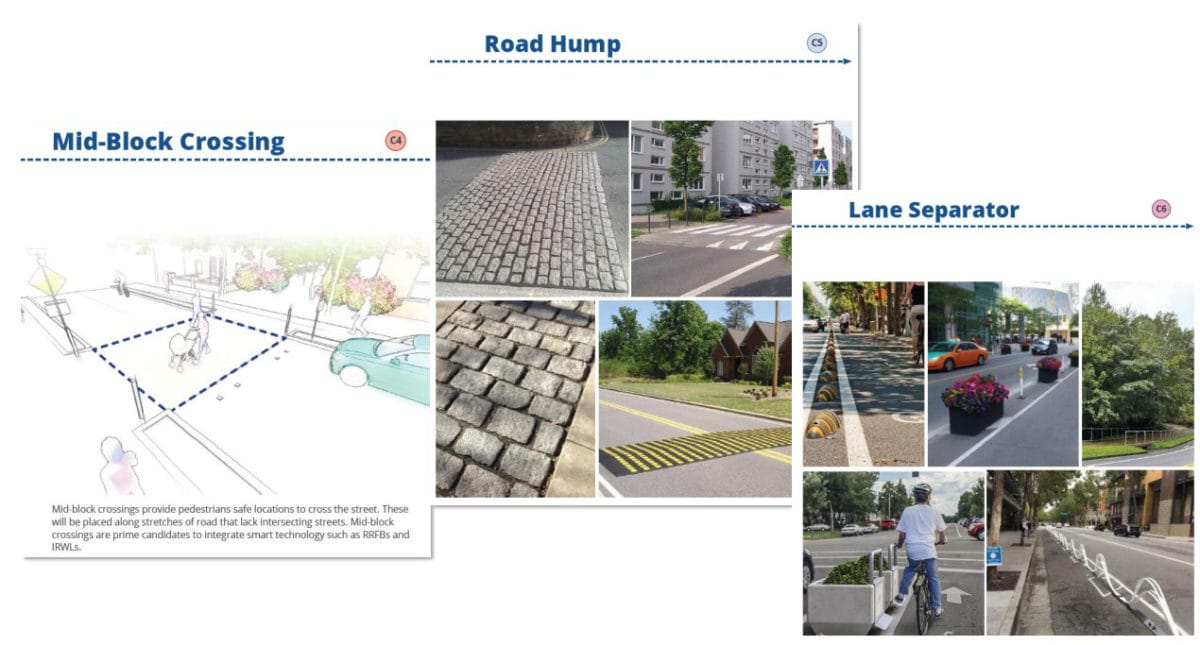
An Uber-style on-demand shuttle service in central Buckhead is scheduled to make its long-awaited — and long-delayed — debut April 19.
The app-based “Buc” shuttle will replace an existing, fixed-route version that runs two business-district loops. While the existing service is focused on commuters, the new on-demand service will be open to anyone and go virtually anywhere within the Buckhead Village and Lenox areas. The idea is to cut down on private vehicle trips and boost alternative commuting.
And the price is hard to beat: free trips to and from the Buckhead and Lenox MARTA Stations, and $3 anywhere else. The service will run on weekdays from morning to evening.
Operated by New York-based Via Technology, the new Buc is funded by the Buckhead Community Improvement District and managed by the alternative commuting and environmental nonprofit Livable Buckhead.
“It’s a game-changer, completely,” says Livable Buckhead Executive Director Denise Starling.
Those groups launched the original Buc in 2003. “So it’s fun to have it be the center of attention again with the cool new technology,” said Starling. “I’m really hopeful that it does catch on with people, particularly residents. … With the previous Buc, only a few buildings could even take advantage of it. So now it’s much more expanded [so that] pretty much everyone can.”

The service will use Mercedes-Benz Sprinter vans, the kind familiar from Amazon deliveries. The transit element means that, unlike Uber or Lyft taxi-style services, riders may share the vehicle with other passengers headed to other destinations. It also means that sizable groups can travel together.
Starling said the app will have virtual Buc stops. She said “every property pretty much has a stop where you can call it and have it come pick you up, just like Uber.”
The on-demand Buc has been in the planning stages for years and was supposed to launch in 2020 — just when the pandemic hit and killed any type of commuting. “It was supposed to launch April 1 of 2020 and the joke was on me,” says Starling.
The Buc would have been a pioneering service at that time. But in the time gap, MARTA has explored similar on-demand micro-transit. On March 1, it launched a similar program called MARTA Reach in parts of Forest Park and Southwest and Southeast Atlanta. Developed in conjunction with a Georgia Tech team, that service is intended as a six-month pilot program.
The Buc is different, using existing technology that’s already in the market, as Via operates in various locations around the nation and the world. And the Buc is not a pilot program; it’s a service with multi-year contract provisions. “We’re not intending to just pilot it and scratch it by any stretch,” said Starling.
Livable Buckhead has kept MARTA informed about the new Buc and offered to share information, Starling said. MARTA has not discussed launching a similar service in Buckhead, she said.
The Buc is intended to generate some of its own funding through marketing within the app, such as ads on the map or discount offers for groups to visit a business.
The old Buc shuttle is scheduled to cease operation April 18 and Livable Buckhead is working to inform its riders about the change.
The actual coding of the app is still being worked on, and the exact boundaries of the service zone have yet to be determined. The app is expected to be available for download about a week before the launch.
In the meantime, a close-up look at the new Buc vans will be available at Livable Buckhead’s March 27 “Party on the PATH” fundraiser. And you can sign up for Buc updates on the Livable Buckhead website.
A garden of native plants at Sarah Smith Elementary School sounds like a nice little project, something kids and passers-by can enjoy. But it may also be the start of something much bigger for North Buckhead.
The garden project, which could start construction as soon as this summer, is intended as the catalyst for a much bigger plan in the works for pedestrian-friendly and greenspace improvements along Old Ivy, Peachtree-Dunwoody and Wieuca roads. The North Buckhead Civic Association (NBCA) calls it “Signature Streets,” and is already lining up some strong community partners.
The trio of “Signature Streets” share such major issues as a lack of sidewalks and safe crossings, and all carry a speedy river of cut-through commuter traffic.
NBCA board member Matt Oja, who lives on Old Ivy, says the effort aims to answer one big but simple question: “How do we connect the neighborhoods together, how do we connect the streets together, in such a way that people want to walk on the streets?”
The NBCA started working on that question back in 2015 with a neighborhood master plan that laid out some concepts. Some money and planning power recently became available through a Buckhead Community Improvement District (BCID) plan to turn the intersection of Wieuca and Phipps Boulevard into a roundabout. The intersection includes a small green space, the NBCA-supervised North Buckhead Park. Discussions about that turned into talk of the larger opportunities for Wieuca and other streets.
The BCID, a group of commercial property owners in the central business who tax themselves to fund various improvements, offered $40,000 for a study by Pond & Company. The recently completed initial phase looked at Old Ivy and Wiecua, but an addendum about Peachtree-Dunwoody is in the works.
Most of that area is outside the BCID’s area, but Executive Director Jim Durrett said there are still ways for it to have a role like the study funding. “We are considering whether and how to partner with NBCA going forward, with details [to be determined],” Durrett says. “We cannot spend capital dollars for construction outside of our geographical boundaries, but we can spend planning and design dollars.”

So far, the studying has produced a bevy of ideas for Old Ivy and Wieuca. They range from a multiuse trail to painted and lighted crosswalks, from road humps to separated bicycle lanes.
The existing PATH400 multiuse trail crosses Old Ivy and Wieuca at Ga. 400, so some better connections are in the plan, too. And the roundabout will contain a handful of green spaces that could double as a “gateway” to North Buckhead featuring some type of sign or public art element.

Then there are the green space ideas, like the Sarah Smith native plant garden — or gardens, really — up to four of them are on the table. The project aims to use areas around the driveway of the school’s Primary Campus at 370 Old Ivy for plantings that can also serve as outdoor classrooms and wild bird habitats. Sidney Baker, the school’s interim principal, says he’s “thrilled” to participate.
“The thought of improving some areas on our campuses with plants native to Georgia is exciting,” said Baker. “The native plants will be beautiful to the birds and butterflies that will find nectar, seeds and pollen there. Students will learn the importance of the environment and can become involved in caring for the area. I salute the work of the North Buckhead Civic Association and am proud they have included Sarah Smith Elementary in the street beautification project.”
Oja and NBCA President Robert Patterson says there’s more to be done in coordinating with Atlanta Public Schools and securing funding, with an application for up to $6,500 from the City’s Community Impact Grant program in the works. Neighborhood Planning Unit B (NPU-B) on March 1 agreed to endorse the grant application at Patterson’s request. NBCA expects to hear about the grant in April or May, but Patterson says there’s already enough in the bank to get started.
“We expect to do the project whether we get the grant or not,” he said, adding that design will start soon, with Phase 1 construction as early as the summer. Next year, the NBCA would aim to raise more money for another phase.
If all goes well, Patterson says, the school’s Intermediate Campus at 4141 Wieuca could get the same sort of garden treatment.
But that’s just the start. As Patterson told NPU-B, the school garden is intended as “the catalyst for a much bigger project” — the whole “Signature Streets” program.
Of course, most of the items in the plan would cost a lot more than a few thousand dollars and require serious engineering. The “Signature Streets” plan itself isn’t done yet, with that Peachtree-Dunwoody addendum expected to wrap up around late April.
But, Oja says, initial response from City officials and potential private funders is “very, very good” — including some statement that if the NBCA can pull off some of these improvements, it could be a model for other neighborhoods. Among the many funding possibilities are latching onto an infrastructure bond and a transportation special local option sales tax that the City is putting on the May primary election ballot.
As the school pilot project shows, the NBCA doesn’t intend to wait around for all of the pieces to come together. Oja says that “we don’t know how long it will take to implement any of this… but we want to do it sooner rather than later. The last thing we want to do is have a plan and put it on a shelf.”
To learn more, see the NBCA website.